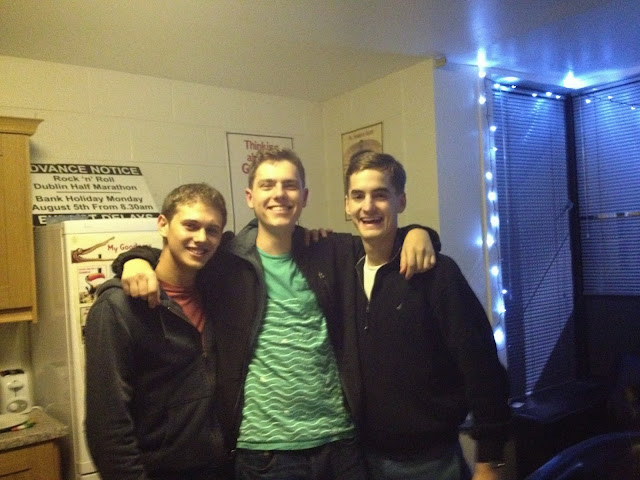The Pogues, Live in Glasgow
Exams finished up this week and -- with a few days to kill before I return to the States -- I headed to Glasgow on Tuesday evening to see one of my favorite bands in concert.
If you're not familiar, The Pogues are an Irish folk-rock group from the '80s who have garnered a bit of a cult following in the U.S. over the past few decades. You might know them from their Christmas tune Fairytale of New York or, for those of my generation, for the song that plays during Jimmy McNulty's wake in the TV show The Wire.
Their lead singer, Shane MacGowan, is a bit of a cult hero in the folk-rock scene. His "defects of personality and his inconstant sobriety and hygiene" (that quote is actually about McNulty, but I think it fits aptly) have gotten him thrown out of the band several times over the years. The Manchester Evening News, in a review of a recent show, said of MacGowan: "The fans celebrate every appearance as another victory over the Grim Reaper, out of whose bony grasp MacGowan has been slipping for 30 years."
On Tuesday night, Shane was on stage and his usual slurring self, remembering just enough of the words to make the whole thing work. The band played through their 1985 record "Rum Sodomy & the Lash" in its entirety before playing a few other favorites. I was surprised by the age of crowd; there were far more 18-25s than there were 40-pluses, which you surely would not see at a U.S. show. Overall, it was an excellent show and a stomping good time, a great way to wrap up my time in Scotland.
One longer note from the show: Glasgow is well-known for its sectarian football rivalry, but I did not expect to see any of that at a seemingly neutral concert on a Tuesday night. Oh how wrong I was. The crowd was decked out in Celtic (the Catholic squad) gear, and there were even vendors selling football merchandise outside. Several times during breaks in the show, the crowd broke out in football-style Celtic chants, which was bewildering and a bit intimidating to an unknowing American observer. I should say that the prime chanters seemed to be the moshing young people in the front, but the older folks near me didn't appear to mind either. The fact that they are spilling over into non-football contexts suggests that these old tensions are still kicking over in Glasgow, and it seems like they're not going anywhere in the near future.
St. Andrews
 |
| Looking down the 'nave' of the cathedral from the altar. From this vantage you can really get a sense of the sheer size, which is very impressive for a 12th-century church. |
 |
| R.I.P. Auld MacDonald |
Dublin
 |
| Middlebury students in Dublin. Note our bad European haircuts. |
 |
| One of the many scenic buildings on the Trinity campus. Unfortunately I have forgotten its name. |
 |
| The old General Post Office, epicenter of the 1916 Easter Rising. You can still see the marks of English shells in the columns out front. |
Subscribe to:
Posts (Atom)






